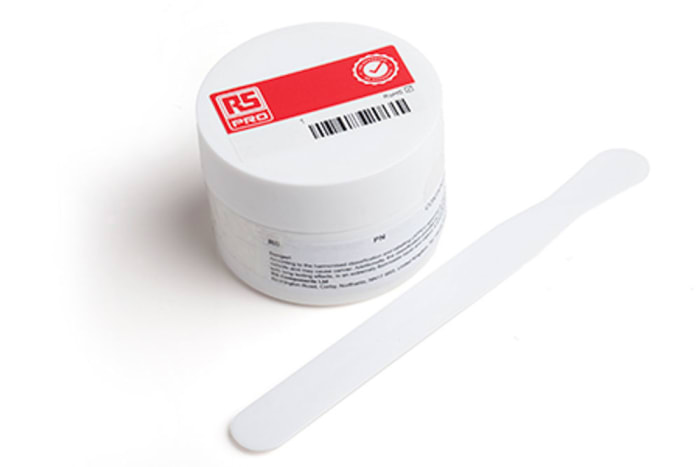RS PRO Thermal Paste, 3.4W/m·K

Teknik Belgeler
Özellikler
Marka
RS ProTermal İletkenlik
3.4W/m·K
Maksimum Çalışma Sıcaklığı
+125°C
Minimum Çalışma Sıcaklığı
-30°C
Çalışma Sıcaklığı Aralığı
-30 → +125°C
Menşe
Taiwan, Province Of China
Ürün Ayrıntıları
RS PRO Phase Change Interface Material
RS PRO phase change materials are ideal for thermal management applications. Available in this range are phase change interface materials in sheets, resistor pads and as a dispensable paste.
Phase change materials work because they change their state with changes in temperature between the heat source and the heatsink. During this process, the material stores thermal energy which is then released as the material cools. This means that the material can absorb thermal energy as the heat is generated which helps to keep the desired component cool. This improves contact between the surfaces, completely fillling air gaps and increasing heat transfer.
Stok bilgileri geçici olarak kullanılamıyor.
Teklif İsteyiniz
1
Teklif İsteyiniz
Stok bilgileri geçici olarak kullanılamıyor.
1
Teknik Belgeler
Özellikler
Marka
RS ProTermal İletkenlik
3.4W/m·K
Maksimum Çalışma Sıcaklığı
+125°C
Minimum Çalışma Sıcaklığı
-30°C
Çalışma Sıcaklığı Aralığı
-30 → +125°C
Menşe
Taiwan, Province Of China
Ürün Ayrıntıları
RS PRO Phase Change Interface Material
RS PRO phase change materials are ideal for thermal management applications. Available in this range are phase change interface materials in sheets, resistor pads and as a dispensable paste.
Phase change materials work because they change their state with changes in temperature between the heat source and the heatsink. During this process, the material stores thermal energy which is then released as the material cools. This means that the material can absorb thermal energy as the heat is generated which helps to keep the desired component cool. This improves contact between the surfaces, completely fillling air gaps and increasing heat transfer.
